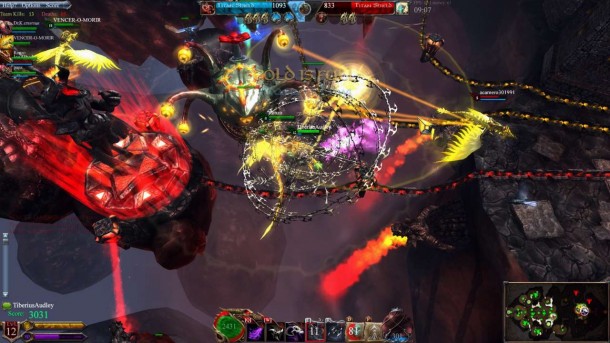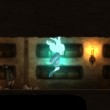Dragons and Titans Review
When you play a game with a title like Dragons and Titans, you seek fire, brimstone, and battles of epic proportions that rattle the very foundations of the Earth. The reality of the latest addition to the ever-expanding MOBA genre, however, is a bland and clumsy game that relies on its theme as a crutch to make up for its gameplay having no longevity of its own. Dragons and Titans may feature the juggernauts of fantasy lore, but the game itself is too frail to make so much as a whimper.
Dragons and Titans is yet another free-to-play game following in the footsteps of the likes of Dota 2 and League of Legends. You select a dragon and a legendary weapon, and then join a team with the focus of annihilating the equally voracious opposing team. As has become a staple of the genre, you may do so in any of three game variants, the central of which has you focusing on freeing your team's titan by destroying the enemy's titan cage in the center of the base. The titan cage is shielded, however, and destroying the various structures surrounding the enemy base serves to take a chunk out of the enemy's shield or speed up the shield's natural decay. The other options are a domination variant, which requires your team to destroy the enemy titan cage, and the familiar all-random, all-mid offering for a more relaxed experience. Matches are much shorter than in most similar games, clocking in at around 20 minutes for a long game, compared to the daunting hour-long matches that often appear in League of Legends.
The dragons in Dragons and Titans rely on special cone-based skills focused in the direction the dragon is facing. Such skills pertain to the element the dragon represents, whether it be poison, fire, light, sand, mist, or so forth. That the basic attack is tied to the direction you face is the cause of untold frustration. Once you use up your other spells and abilities or run out of mana, you and your opponents have nothing but basic attacks left, and battles play out in one of three equally exasperating ways: you chasing down someone who's too low to stay and fight and just flies in a zigzag pattern to reduce your damage; you chasing an enemy fighter who is waiting on cooldowns and simply flies backward; or you and an enemy dragon rider attempting to fly directly at one another, only to end up chasing each other's tail in a circle. The resulting chaos is never fun.
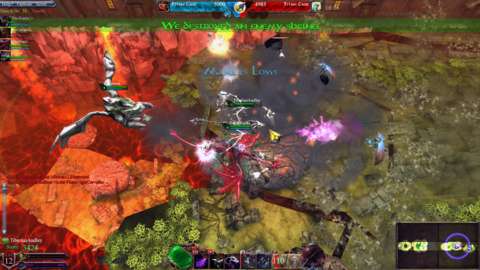
Basic attack complaints aside, dragons are inherently equipped with one other ability to give them their unique identities. The paper dragon has a bonus health shield to bolster its literally paper-thin defenses, the bone dragon gains some close-range combat ability, and the magma dragon sends chunks of flaming rock flying at foes. These abilities, and a dragon's appearance and base stats, are the only aspects of the game lending identity to the different selectable characters, apart from the game's legendary weapon system.
While teams are limited to one of each type of dragon per team, they are also limited to one of each type of legendary weapon. Legendary weapons grant you two additional abilities, and any weapon can be attached to any dragon, so you can customize half of a dragon's skill set on a game-to-game basis. This offers some interesting customization options, such as the ability to turn a back-line poker into an equally devastating threat in melee range, or to simply increase your firepower from afar, but it also drains the identity of each class of dragon and makes them all bleed into one.
That the basic attack is tied to the direction you face is the cause of untold frustration.
The game offers a single-player campaign for those who aren't interested in, or who want a break from, playing against other players. The campaign consists of three acts, two of which you must pay for to unlock, and is merely a gauntlet of "kill this, kill those, collect these, and kill that," with forgettable bits of dialogue to link each bit together. There are three difficulty levels, and the game offers an additional "star" for beating the level with additional parameters, such as within a certain time or with a certain dragon.
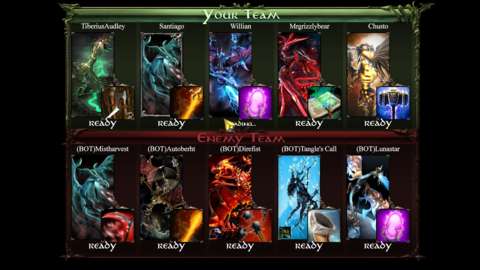
Much like League of Legends, Dragons and Titans features a rune system for customizing your stats for a battle by collecting and purchasing runes to power up your dragon. Unlike in League of Legends, the runes can be purchased with real money, leading to a red flag for those opposed to "pay for power" mechanics in games. Further in this insidious vein is the ability to forge your legendary weapons to reduce mana costs or cooldowns or to increase their damage. To forge, you expend forge materials and wait four hours, or use an ingot to finish the forging instantly. Once again, ingots can be purchased with real money, so players who pay can power up their characters more quickly than those who simply attempt to acquire them by grinding. You can make pretty substantial progress on a weapon's forging for as little as $4, with those 1 percent boosts all adding up to a noticeable decrease in mana consumption. And again, I stress that mana goes away fast in this game. You want mana. You want things to not cost a lot of mana. You want to forge that weapon you're using.
One of the few areas where Dragons and Titans succeeds and others have failed is in its method of mitigating champion select arguments over who gets to play which champion, because prior to queuing, you can preselect your dragon or legendary weapon. It comes with a warning that it will increase queue times, since running into anyone else preselecting your dragon or titan prevents you from being matched, but in my experience, the queue time didn't noticeably increase. I was guaranteed to get the weapon I wanted every game, which meant more to me than what dragon I selected. The mechanic is a brave one, especially given the meager player base, but it succeeds in its purpose.
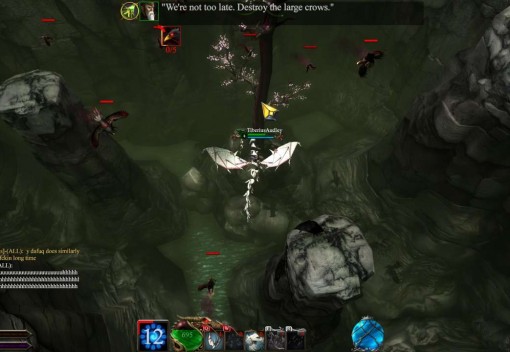
It's a shame that a game featuring colossal lizards would look and sound so drab. Dragon fire-breath sounds are nigh indistinguishable from the sound of static when your TV's cable has gone out. The only graphics options available to adjust are resolution, full-screen mode, vertical sync, and a single slider allowing you to choose between fast or pretty graphics; the best I could reckon the slider did was adjust the brightness from "morning-drive road glare" to "moderate corneal incineration." You may wish to wear sunglasses when playing the game, or turn down your monitor's brightness and contrast settings to comfortable levels.
Dragons and Titans is a mere shadow of other, richer MOBAs, and while its significantly shorter average game time may give it some initial appeal, that appeal comes at the cost of almost any enjoyment of the time invested. Dragons and Titans could have been a gateway game to the genre, but weighed against the game's counterparts, neither dragon nor titan can tip the scales in its favor.

